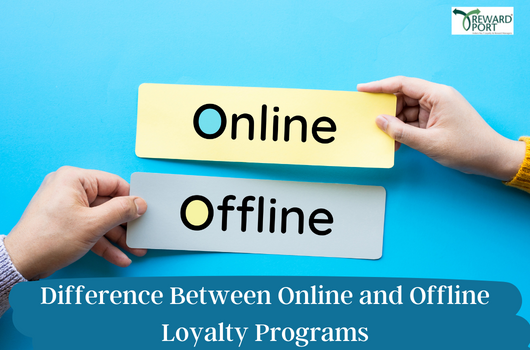Retailers appeal to customers’ buying habits with incentives in order to outsell their competition. This trend has been in practice since the beginning of time. Over years, retail has continued to evolve, and following the birth of ecommerce in the early 1990s, loyalty strategies have made a migration to the digital platforms with definite motives. With all of the online and offline rewards programs emerging every passing moment, one might begin to wonder where exactly the differences lay between them. A detailed study of both the platforms leads to a clearer opinion about the debate that has raised quite a few opinions.
Offline Loyalty Programs:
Location has always held significant consideration on its part, for customers who choose to purchase products in-store, rather than an online purchase. However, additional expenses may be associated with visiting a particular store to purchase a certain product. Although, customers tend to come back on their own simply due to the close proximity to a specific store, retailers must still be aiming to appeal to their customers’ best interests with their loyalty programs. Following are some of the strategies tailored to benefit the offline sales environment:
1. Social Sharing:
High chances prevail that customers will browse through physical stores through social networks before the purchase. The current generation of customers, in particular, spend a considerable amount of time on mobile devices, checking into social media accounts and with such exposure, harnessing social sharing power is a genius way to entice customers to shop with you. Rewarding customers for sharing their experiences with the products on platforms like Twitter and Instagram gives retailers the opportunity to create brand influencers while incorporating their brand into the everyday social fabric of their customer base.
2. VIP Tiers;
VIP tiers allow retailers to acknowledge and evaluate their best customer base with exclusive benefits and rewards. Simply effective at increasing customer engagement, VIP tiered programs give the the customers an opportunity to earn more, which in turn encourages them to spend more. VIP programs have emerged as an excellent solution for brick-and-mortar retailers, because once a customer is committed, they are more likely to engage themselves with a specific store. It’s the perfect example of how exclusive benefits, as opposed to discounts, set a brand apart from the herd.
Online Loyalty Programs
One of the most significant reasons people prefer to shop online is discount prices, which doesn’t come as a surprise given the fact that many such people don’t even have a savings account. Online shopping has taken the commercial merchants by storm, and is soon to dominate, which raises a need for loyalty programs to ensure a customer base. With the facility to shop around and buy at the lowest price in a matter of seconds, there are many ways ecommerce merchants can work to keep their customers hooked.
1. VIP Tiers:
VIP Tiers is a perfect example of some of the strategies which can be incorporated in both online and offline platforms. Tiers are especially known to industries like supplements and cosmetics because they have intense levels of competition. Brands that reward customer loyalty with benefits and transactional rewards are more appealing in a more obvious sense. Offering customers access to exclusive events or product launches are some of the many ways that retailers can give recognition to their VIP customers, considering that these loyal customers are responsible for a majority of their business.
2. Engagement Touch Points:
One must provide the customers with ways to engage outside of the shopping cart if one wishes to make his online brand stand out. With a rising trend of using smartphones for all manner of online activity, people are searching for experiences that complement their lifestyle. Referral programs are an excellent way to encourage customers to engage with one’s brand throughout their everyday necessities, and can be seen as the evolution of the old school reward systems.
No matter what you’re selling, where’re you’re selling; whether it’s online or offline, a loyalty program is a proven way to acquire a huge customer base. Through exclusive rewards, beneficiary initiatives, and social awareness, one can treat customers to a lifestyle and loyalty experience unlike anywhere else, making one’s brand a priority for them, every time they go shopping.


